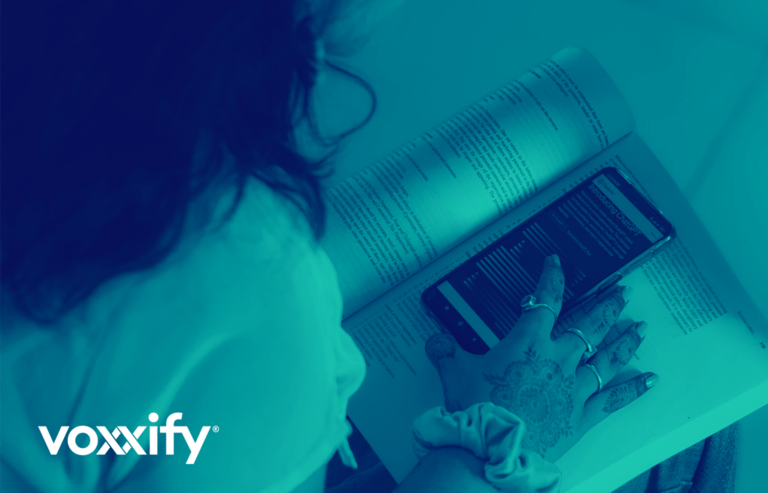The best data to inform your IT action plan is from the end users themselves, shares Steve Fleming, CEO of Voxxify.
Published on Techcentral | 23 June 2021
Employee expectations have changed, and they will never be the same again. Whether full-time remote or hybrid, the ability to work from home (WFH) is now expected, and not a nice-to-have.
Before COVID normalized remote working, we found that employees most likely to recommend their employer were those working remotely full-time from home. Conversely, however, the IT experience of those workers was significantly worse than their office-based colleagues. They wanted WFH; but legacy IT systems made that very difficult. Now that a combination of full-time remote or hybrid will be the reality for most companies, ensuring that the systems and tools provided by IT fully meet changing needs will be key to maintaining productivity and employee satisfaction for this new era of WFH.
But “home” (like “work”) is a fluid concept. Many companies have asked employees to define exactly what the H in WFH looks like. Facebook, for example, is extending its remote working policy, which allows employees to move country so that staff get more location flexibility as the company plans for its hybrid future.
While all this seems positive, problems lay ahead as companies transition back to the new normal. A significant issue is the growing disconnect between managers and their employees. According to recent research by Microsoft, most business leaders have had a ‘good pandemic’ while their employees have not fared as well. 61% of business leaders say they’re “thriving” right now – 23% higher than those without decision-making authority. When you look at the demographics behind these two cohorts, business leaders surveyed are more likely to be Millennials or Gen X, male, information workers, and farther along in their careers. In contrast, Gen Z, women, frontline workers, and those new to their careers reported struggling the most over the past year.
In general, staff are feeling more and more disconnected from their companies’ goals. They expect their employers and leaders to empathize with their unique challenges. Unfortunately, business leaders may be out of touch with what their employees need. When you interrogate the data, this picture becomes even more nuanced, with employees having very different experiences depending on their region, workstyle, and technical ability.
As the talent landscape continues to shift, employees are feeling emotionally and professionally disconnected, and less loyal to their employers. It’s no wonder that workforce churn is increasing. Over 40% of the global workforce are considering leaving their employers this year. Therefore, a thoughtful approach to hybrid work will be critical for attracting and retaining diverse talent.

—
Experience Management will be a key differentiator
A report by MIT Sloan Business School mapping digital transformation best practices found that “employee experience management is key to mapping the way forward … workplace wellbeing and empathetic leadership is more important than ever.” Because of this renewed emphasis on employee experience and the reality of a dynamic and hybrid workplace going forward, department managers must work closely together to ensure workers are properly resourced and supported to do their jobs.
Where does IT experience fit into all this?
In 2020, billions were spent buying tech and tools to enable employees to work from home. This digital workplace transformation is something people in the IT Industry expected to take decades, but has in fact been achieved in a matter of months.
Because of the rapid transition to the new normal, IT teams need to assess what is and isn’t working, collaborating closely with other departments like HR, Finance and Facilities to increase employee success. IT must transition into its new role as a corporate change leader, trusted advisor, and provider of the right tools for the job. This means moving to the role of a business enabler, helping to empower knowledge workers to get things done, for whom autonomy is a necessity, not simply a nice-to-have.
The best way to plan is to use evidence-based data on how IT is really working for all your end users, whatever their differences. Using an experience management platform like Voxxify® can help managers make sense of the noise, aggregate data into an insightful plan, and identify groups with differing wants and needs. The most successful IT teams for this new era of work will be prepared to ask tough questions – and sometimes hear tough answers – in order to determine how they can better serve their end users. They will aim to understand which tools are temporary and what is here to stay, and if those tools and initiatives actually represent good value for money? Are they a sensible choice?
The only way to know for sure is to gather honest feedback at scale and generate clear, unbiased evidence to quickly prioritize and create a feedback driven roadmap.
User-centred IT will be critical for the new normal
The importance of IT as an internal service in large corporations has grown significantly as a result of COVID. IT has always been a provider of essential tools for the workplace. However, in this climate, the increased importance of digital tools has focused more critical attention on IT’s continued support of those rollouts.
Annual workplace surveys like the Gallup Q12 which measures the “12 foundational elements of employee engagement that predict high team performance” have highlighted the critical importance of IT to overall performance: a person not having the materials and equipment to do their work well is consistently the strongest indicator of job stress. IT departments (and central management) therefore need to be aware of their critical role as a provider of these fundamental materials.
According to MIT Sloan, digital exhaustion is one of the major threats in the age of the new normal, with IT Tools forming a critical part of overall employee wellbeing. By gathering data on how well specific software or tools work for employees, managers can identify whether what they have invested in is actually benefiting employees or just stressing them out.
Planning for Deviation – thinking about groups
The pandemic has affected different people in different ways. To understand IT experience at scale I’ve learned that it’s beneficial to gather and analyse the data from the perspective of groups, rather than individuals. For example, by analysing feedback data by geography and role type, one of our clients found that software engineers in France had problems accessing cloud-based services, which was not an issue for their users in North America. Prior to running the Voxxify® survey this issue that was impacting significantly on the EMEA R&D function was not apparent – incurring costs the company was not aware of, and creating frustration for key staff.
Disparate needs and capabilities complicate IT’s task of supporting employees, especially in large global organizations. Uniform rollouts may work for some groups but hinder others and cause gridlock for others still. Therefore, complex challenges require thoughtful calculated solutions. For example, one global charity we worked with recently found that certain regions were having significant issues with connectivity. By implementing a modular approach to solving the problem in a targeted way, they boosted efficiency and improved global IT satisfaction by over 30%. Without the data they would not have had the knowledge to identify the specific issues, and target resources accordingly.
The virtue of listening. Gain insights you can trust
As highlighted at the 2021 Gartner EMEA Digital Workplace Summit, the pace of change in the workplace is only going to increase. As IT leaders prepare for an entirely new roadmap of expectations and responsibilities, the best approach will be data-driven. The key to success will be understanding what sources of information to rely on.
Having led UX for internal IT at large multinationals, I dealt with this very challenge. From my experience, the only reliable source of data on changing employee needs – and whether tech is meeting them – is the employees themselves. The data is there for the asking.
The future of work is about iteration. It’s about empathy. It’s about understanding that asking questions is better than pushing answers. Making sense of changing employee needs in the new normal is complex, so let’s start by asking good questions and getting really honest answers.
Every organization needs a plan that puts people at the center. According to Microsoft’s 2021 Work Trend Index, the key step for managers is to “formulate a plan to empower employees for extreme flexibility”. But how can IT managers do that? There is so much information but often it’s hard to make sense of it. Our clients are on a similar journey, and they are using the Voxxify® platform to not only gather this information but to generate the insights securely, quickly and with accuracy to form an actionable plan.
As IT teams adapt to the New Normal, three of the most effective approaches to implementing “User-centric IT” include:
1. Conduct Regular Pulse Checks
Our work with IT managers has shown that the best way to prioritize the IT strategy is to carry out an “IT Pulse Check” – asking a large proportion of end users on a regular basis “how are we doing in terms of IT?”. The key is to analyse those results quickly, share details with business stakeholders, and build consensus on priorities before making changes to the plan. In this sense, the company creates a series of iterative roadmaps to address employee needs, all the while giving them the chance to engage with the process.
2. Use a Surveying tool that is fit-for-purpose.
In a world where ongoing disruption is part of the new normal, IT leaders need to be prepared to respond to sudden changes. Importantly, as the pace of change accelerates, they also need to be able to assess what’s working and what isn’t, to iterate and continuously improve. Effective surveying – while preserving security and data privacy and mitigating survey fatigue – will continue to be an important tool for IT.
For example, Cerence Inc., a publicly listed mobility technology company, used Voxxify’s AI-powered technology to quickly identify issues and prioritize actions to improve the IT experience of their 2,000 employees. As soon as the survey closed they discovered significant issues that could be solved relatively quickly. One issue was difficulty with using Workday, which the team resolved with targeted training and more upfront time for onboarding. Another was widespread issues with a collaboration tool, addressed by using a “blend and extend” model of implementation along with renegotiation on price with the vendor.
3. Appoint a Chief Experience Officer central IT Experience team
To address the concerns of employees, more progressive firms have appointed a C suite executive to advocate on their behalf. Chief Experience Officers, for example, focus on the needs of external and internal customers alike. These managers, of course, ought to be informed by the most relevant and actionable data. Some companies are working with their employees and using their feedback data to design an approach to the new normal.
In summary
Today’s decision makers are responsible for establishing the answers to these questions to formulate a plan to empower end users with tools for flexibility, then provide guidance to employees as you experiment, listen, learn and take action.
“There’s no doubt that challenge and uncertainty lie ahead. But this moment also offers leaders a powerful opportunity to unlock new ways to achieve everything from wellbeing and work-life balance to an inclusive and authentic company culture — and experience better business outcomes along the way. If we embrace extreme flexibility, follow data insights, and continue listening closely to employee needs, together we can create a better future of work for everyone.” (Microsoft 2021 Work Trend Index)
The future of work will be flexible, digital and distributed. The new normal is here but more challenges lie ahead. IT leaders can plan for the future and prioritize by asking employees serious questions, and be ready to listen and respond to honest feedback. If the questions are asked properly, limiting bias and maximising the chance to generate insights, this is the best chance they have of accessing evidence they can trust.
Read on Tech Central



